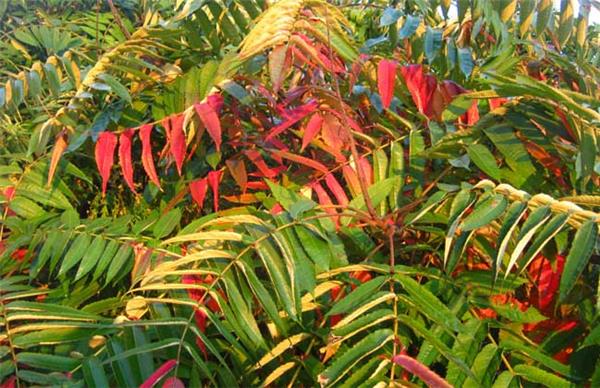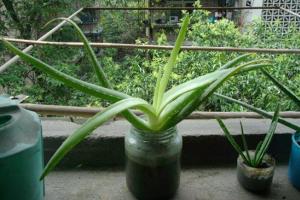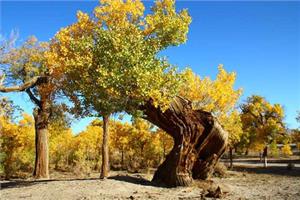The planting method of Torch Tree cultivation techniques of Torch Tree
Torch tree, also known as antler lacquer, torch lacquer, Canadian salt tree, etc., is a small deciduous tree of the Lacqueraceae family, with bright red ears, oblate fruit, red bristles and closely gathered to form a torch. It is widely cultivated in the provinces (regions) north of the Yellow River valley, which is mainly used for barren mountain greening and saline wasteland scenic forest species. Let's take a look at the cultivation techniques of the torch tree.

Growth habits of Torch Tree
The torch tree is native to Europe and the United States and often grows on open sand or gravelly soil. Like light, cold resistance, strong adaptability to soil, resistance to drought and barren, resistance to moisture, salt and alkali resistance. The root system is well developed and the tillering ability is strong, and 30-50 tillering plants can germinate within four years. Shallow roots, fast growth and short life span. The speed of reproduction can not be compared with many greening tree species, which has unique excellent characteristics and serious potential harm.
The planting method of Torch Tree
1. Sowing and planting: the torch tree seed is small, the seed coat is hard, and its outside is covered with red needles. Rub with boiling water before sowing to remove the red villi outside the seed coat and the wax on the seed coat. Then soak it in 85 ℃ hot water for 5 minutes, remove it, bury it in wet sand, put it in 20 ℃ room to accelerate germination, and sprinkle proper amount of water according to the state of water evaporation. The seeds can be sown after 20 days of budding, with a sowing amount of 7 to 10 jin per mu and a row spacing of 35 square meters. It basically came out after 20 days, and the height of the seedling was 80 cm, and the ground diameter was 1 to 1.5 cm.
2. Root insertion and planting: there are many lateral roots of Torch tree and extend horizontally. Every year, when the seedlings come out of the nursery, the lateral roots with a thickness of more than 1 cm are selected and cut into root segments with a length of 20 cm. According to the polarity of the root, the top is up, the stem is down, and the plant distance of 40 × 30 cm is inserted directly into the whole nursery. After insertion, the top of the root section is covered with 2 to 4 centimeters of thin soil, and water is often sprayed to keep moist. Generally speaking, it first sends adventitious buds, breaks the soil to grow new branches, and then takes root and survives. The height of the seedlings was more than 1 meter in that year.
3. Root tillering and planting: many root tillering seedlings often sprout around the two-year-old torch tree, which can be selected according to the row spacing, and pay attention to the removal of root tillers and too many lateral branches to cultivate strong seedlings with good tree shape. The height of seedlings can reach 1.5 to 2 meters in that year. It can be transplanted in the middle of March in the second year after breeding.

Cultivation techniques of Torch Tree
1. Water and fertilizer management: the seedlings of Torch tree were watered every 10 days after emergence and once every semimonthly after one month. General topdressing 2 times, mainly urea, 5-7.5 kg / mu, combined with watering. The seedlings of the torch tree are relatively delicate in that year, and they are vulnerable to freezing damage in winter. After the end of July, they rubbed the seedlings, stopped watering, fertilizing and loosening the soil, and knocked down some of the branches and leaves that were too prosperous to promote Lignification.
2. Seedling replenishment: when the height of the torch tree is about 3 cm from April to May (3 × 4 true leaves), the seedling is replenished for 2 times, and the seedling is fixed when the seedling height is 10 cm, and the row spacing is 30 × 30 cm.
3. Loosen the soil and remove seedlings: according to the soil consolidation and weeds, loosen the soil and weed once every 10-15 days, and stop at the end of July. There are not many diseases and insects in torch tree, so we should pay attention to timely prevention and control.
4. Timely transplanting: the transplanting of the torch tree should be carried out from the defoliation in late autumn to before germination in next spring. Afforestation in arid and barren mountainous areas should be cut and planted, cut flat at 18 to 20 meters from the surface, cut off the overlong main and lateral roots after seedling emergence, and retain 25 meters in length, so it is easy to survive.
Pruning and shaping of Torch Tree
1. Shrubby: for the pruning of shrubby torch trees, it is mainly based on the principle that the trees are transparent. In the process of cultivation and maintenance, redundant branches, dry and withered branches, overdense branches and drooping branches can be removed in time, and the surrounding sprouting seedlings should be cut off in time.
2. Arbor
① selected the seedlings with strong growth and strong dryness, and removed all the lateral branches, leaving only the trunk. The trunk was cut short at the end of autumn, and a strong new branch was selected as the trunk extension branch under the cut mouth the following year, and the rest of the new branches were all removed.
In the process of ② growth, the lateral branches on the trunk extension branches were removed in time, the trunk was cut short according to the method of the first year at the end of autumn, and the strong branches were selected as the trunk extension branches in the next spring.
③ can start to cultivate the main branch when the trunk grows to a certain height. The method is to truncate the top of the branch and leave three or four strong and evenly distributed branches as the main branch. After the main branch grows to a certain length, it is coring to promote the growth of lateral branches.
④ truncated the lateral branches at the end of autumn to promote the growth of secondary lateral branches. In this way, the basic tree shape is formed and only redundant branches, dry and withered branches, drooping branches, dry and withered branches need to be pruned in time in the subsequent maintenance.
- Prev

Understand the growth habits of aloe to make aloe grow better. Can aloe bask in the sun?
Understand the growth habits of aloe to make aloe grow better. Can aloe bask in the sun?
- Next

Propagation methods of Populus euphratica Seedling raising techniques of Populus euphratica
Propagation methods of Populus euphratica Seedling raising techniques of Populus euphratica
Related
- Wuhan Hospital Iron Tree Blooming Result Was Instantly Frightened by the Gardener Master
- Which variety of camellia is the most fragrant and best? Which one do you like best?
- What is the small blue coat, the breeding methods and matters needing attention of the succulent plant
- Dormancy time and maintenance management of succulent plants during dormancy
- Minas succulent how to raise, Minas succulent plant pictures
- What are the varieties of winter succulent plants
- How to raise succulent plants in twelve rolls? let's take a look at some experience of breeding twelve rolls.
- Attention should be paid to water control for succulent plants during dormant period (winter and summer)
- Watering experience of twelve rolls of succulent plants
- Techniques for fertilizing succulent plants. An article will let you know how to fertilize succulent plants.

